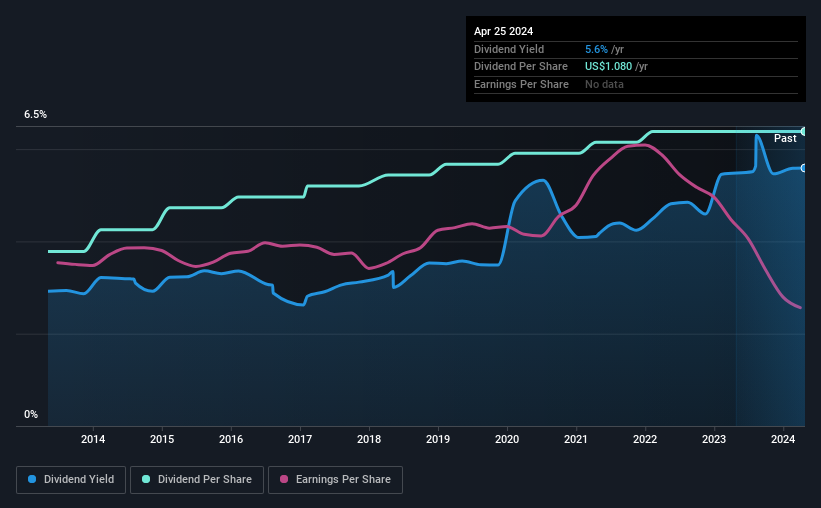Ames National (NASDAQ:ATLO) Is Paying Out A Dividend Of $0.27
Ames National Corporation (NASDAQ:ATLO) has announced that it will pay a dividend of $0.27 per share on the 15th of May. This means the annual payment is 5.6% of the current stock price, which is above the average for the industry.
View our latest analysis for Ames National
Ames National Not Expected To Earn Enough To Cover Its Payments
A big dividend yield for a few years doesn't mean much if it can't be sustained.
Ames National has a long history of paying out dividends, with its current track record at a minimum of 10 years. While there are no guarantees that Ames National will always be able to pay out a dividend, the company's payout ratio sits at 98%. This may be worrying, as it shows that Ames National is barely covering its dividend.
If the company can't turn things around, EPS could fall by 9.8% over the next year. Assuming the dividend continues along recent trends, we believe the future payout ratio could reach 114%, which could put the dividend under pressure if earnings don't start to improve.
Ames National Has A Solid Track Record
The company has been paying a dividend for a long time, and it has been quite stable which gives us confidence in the future dividend potential. The dividend has gone from an annual total of $0.64 in 2014 to the most recent total annual payment of $1.08. This implies that the company grew its distributions at a yearly rate of about 5.4% over that duration. The dividend has been growing very nicely for a number of years, and has given its shareholders some nice income in their portfolios.
Dividend Growth May Be Hard To Come By
Investors could be attracted to the stock based on the quality of its payment history. Let's not jump to conclusions as things might not be as good as they appear on the surface. Ames National has seen earnings per share falling at 9.8% per year over the last five years. If earnings continue declining, the company may have to make the difficult choice of reducing the dividend or even stopping it completely - the opposite of dividend growth.
Ames National's Dividend Doesn't Look Sustainable
In summary, while it's good to see that the dividend hasn't been cut, we are a bit cautious about Ames National's payments, as there could be some issues with sustaining them into the future. We can't deny that the payments have been very stable, but we are a little bit worried about the very high payout ratio. We would be a touch cautious of relying on this stock primarily for the dividend income.
Investors generally tend to favour companies with a consistent, stable dividend policy as opposed to those operating an irregular one. However, there are other things to consider for investors when analysing stock performance. To that end, Ames National has 3 warning signs (and 1 which doesn't sit too well with us) we think you should know about. If you are a dividend investor, you might also want to look at our curated list of high yield dividend stocks.
Have feedback on this article? Concerned about the content? Get in touch with us directly. Alternatively, email editorial-team (at) simplywallst.com.
This article by Simply Wall St is general in nature. We provide commentary based on historical data and analyst forecasts only using an unbiased methodology and our articles are not intended to be financial advice. It does not constitute a recommendation to buy or sell any stock, and does not take account of your objectives, or your financial situation. We aim to bring you long-term focused analysis driven by fundamental data. Note that our analysis may not factor in the latest price-sensitive company announcements or qualitative material. Simply Wall St has no position in any stocks mentioned.

 Yahoo Finance
Yahoo Finance 
